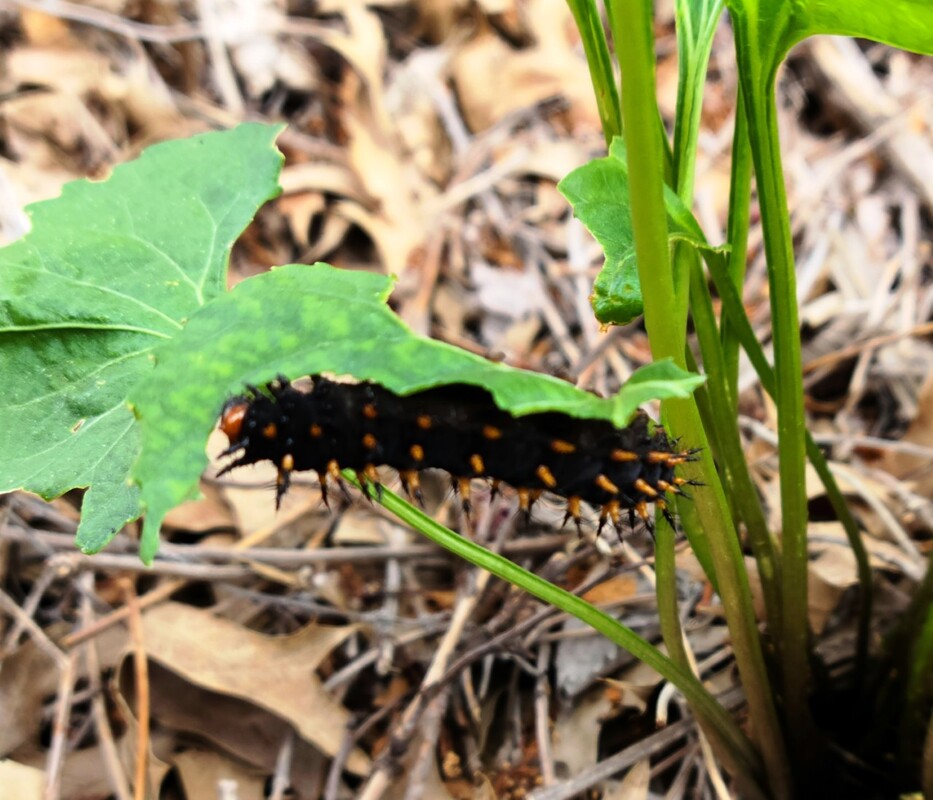The larvae of the Great spangled fritillary (Speyeria cybele) are an example of this.
In the fall, when she’s ready to lay her eggs, the female GSF searches for violets (Viola sororia), which are the host plant for fritillary caterpillars --the only food the little larvae will eat. She carefully lays her eggs at the base of the violets. The eggs hatch in a few weeks, and the tiny caterpillars go into hiding under leaf litter.
And there they will stay, all winter long—hidden in plain sight! Having entered diapause, these larvae won’t eat, or even move much, until spring comes.
When the temperature warms and the violets begin to grow, the caterpillars will crawl up to the plants and begin to chow down! But even then, they do so only at night, under cover of darkness.
Leaf litter is an essential part of a pollinator habitat, providing shelter for many overwintering guests. It's a good reason to rake leaves into flowerbeds in the fall, rather than bagging them for disposal. The Great spangled fritillary will thank you!
Author: Lisa Schneider
Photo: Lenora Larson


 RSS Feed
RSS Feed